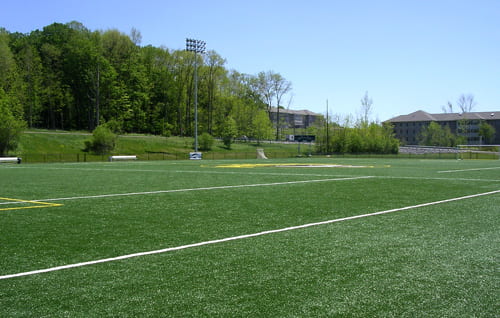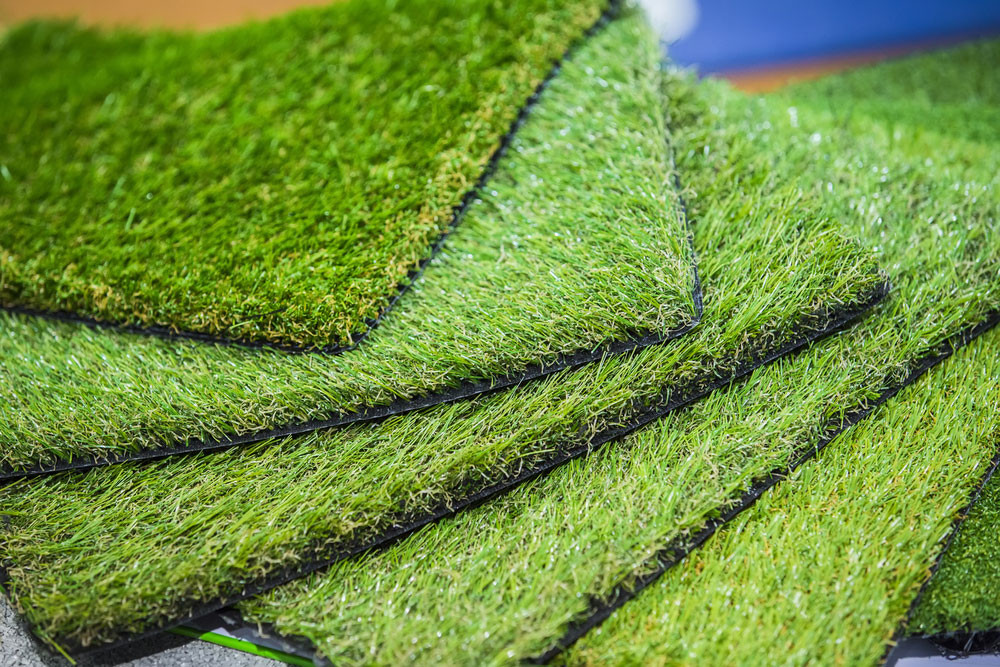Enjoy a Ideal Lawn with Arizona Artificial Turf for Any Outdoor Space
Enjoy a Ideal Lawn with Arizona Artificial Turf for Any Outdoor Space
Blog Article
Delve Into the Environmental Benefits of Opting for Artificial Lawn Solutions
The adoption of artificial turf solutions offers an engaging possibility to attend to pressing ecological obstacles. By considerably reducing water usage and reducing the application of harmful chemicals, these choices not only advertise sustainable landscaping however also safeguard neighborhood ecosystems.
Water Conservation Benefits
One of the most substantial benefits of synthetic turf is its ability to preserve water. In comparison, synthetic grass does not require watering, substantially minimizing the overall need for water sources.
By getting rid of the need for routine watering, synthetic lawn contributes to lasting landscape methods and assists mitigate the ecological influence of extreme water consumption. Furthermore, the preservation of water reaches the reduction of runoff, which can cause dirt erosion and river contamination.
Additionally, the installment of synthetic grass allows home owners and municipalities to designate water sources much more efficiently, concentrating on necessary usages such as drinking water and farming. The shift towards synthetic grass not only advertises responsible water usage however additionally lines up with more comprehensive environmental goals intended at protecting all-natural sources.
As areas significantly prioritize sustainability, the water conservation benefits of synthetic grass offer an engaging case for its fostering in business and household landscape design tasks.
Minimized Chemical Usage
The change to synthetic lawn substantially decreases the dependence on chemical therapies typically made use of in natural grass upkeep. Traditional turf administration commonly includes the application of chemicals, herbicides, and fertilizers to advertise development and control bugs. These chemicals can present threats to human health, local wildlife, and the setting, adding to soil and water contamination.
In comparison, fabricated turf removes the requirement for these hazardous compounds. By reducing the launch of synthetic substances into the community, fabricated grass advertises healthier dirt and water systems.
In addition, the absence of chemical overflow related to man-made grass setups aids protect regional rivers from contamination, sustaining marine life and preserving biodiversity. Phoenix turf companies. As neighborhoods progressively focus on sustainable methods, going with artificial turf offers a viable service that straightens with environmental conservation goals. With this shift, home proprietors can appreciate lush environment-friendly areas without jeopardizing eco-friendly wellness, leading the way for a more sustainable future
Lower Carbon Footprint

In addition, the installation of artificial lawn can cause substantial water conservation. Natural lawns need substantial quantities of water for irrigation, which not only includes in the carbon footprint connected with water removal and therapy yet additionally stress neighborhood water sources. On the other hand, synthetic grass requires minimal maintenance, needing no watering, thus considerably decreasing water usage and its associated power costs.
Additionally, the longevity of fabricated turf contributes to its lower carbon effect. With a life-span of approximately 15 years or even more, the requirement for regular substitutes is decreased, resulting in much less waste and reduced power usage in manufacturing and disposing of conventional yard alternatives. Overall, artificial turf offers a lasting alternative for ecologically mindful landscaping.
Habitat Conservation
Environment preservation is a vital consideration in the discussion over landscape design selections, especially when comparing artificial lawn to natural lawn. Natural yard yards usually require substantial maintenance, consisting of using pesticides, fertilizers, and herbicides, which can detrimentally influence local environments. These chemicals can leach right into the soil and waterways, hurting native plants and animals and interfering with regional habitats.
Artificial turf gets rid of the requirement for hazardous chemicals, therefore protecting close-by wildlife and keeping the stability of surrounding environments. The installment of fabricated lawn can lead to the conversion of previous yard areas into more biodiverse landscapes, such as pollinator gardens or indigenous plant locations, which can sustain local wildlife.
Ultimately, the transition to synthetic lawn not only conserves go water and lowers upkeep initiatives yet also fosters an extra unified connection between human activities and the all-natural setting, advertising environment preservation while doing so.
Long-Term Sustainability
Long-lasting sustainability is a critical variable in reviewing the advantages of synthetic turf over traditional yard yards. One of the most considerable benefits of synthetic grass is its sturdiness; it can last up to 15-20 years with minimal maintenance, whereas all-natural turf requires regular reseeding and substitute. This durability decreases the need for continuous resources, such as water, plant foods, and pesticides, which are vital for maintaining a go to this website healthy and balanced turf lawn.
Additionally, artificial lawn adds to a decrease in carbon emissions related to lawn care equipment. Traditional grass usually need gas-powered lawn mowers, trimmers, and blowers, all of which add to air pollution. Artificial turf companies phoenix. On the other hand, synthetic grass eliminates the requirement for such tools, promoting a cleaner atmosphere
Additionally, the production of synthetic grass significantly utilizes recycled materials, enhancing its sustainability account. As manufacturers embrace environment-friendly techniques, the environmental footprint of synthetic grass remains to decrease.

Final Thought
The adoption of synthetic grass solutions offers considerable ecological advantages, including significant water conservation, lowered reliance on damaging chemicals, and a lower carbon impact. Furthermore, synthetic grass help in preserving natural environments by decreasing land disturbance and promoting long-term sustainability with making use of sturdy products. Collectively, these variables underscore the capacity of synthetic lawn to contribute favorably to ecological health and use a viable option to traditional landscaping methods in a significantly resource-conscious globe.
In comparison, artificial grass does not need watering, significantly minimizing the overall demand for water resources. By decreasing the release of artificial substances right into the community, synthetic grass advertises much healthier soil and water systems.
Additionally, the setup of man-made grass can result in substantial water conservation. In contrast, man-made grass requires minimal maintenance, needing no watering, consequently considerably decreasing water use and more information its linked energy costs.

Report this page